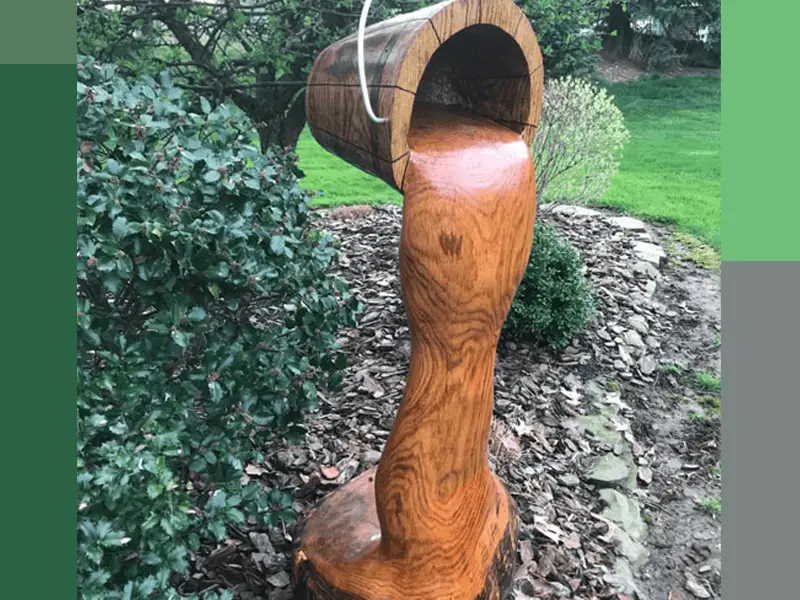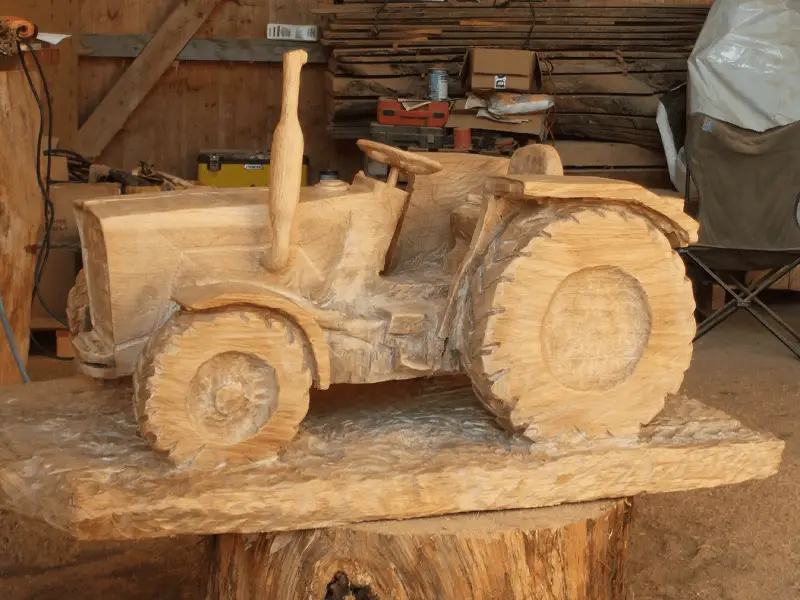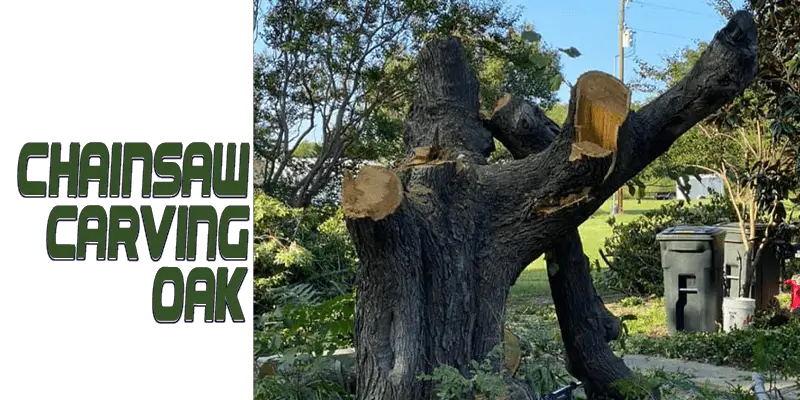Choosing the right type of wood can make all the difference in chainsaw carving. A popular hardwood, Oak is often considered a great option due to its strength and durability. However, Oak also presents some challenges for carving, including its hardness and tendency to split and check. This post explores the benefits and challenges of chainsaw carving Oak and some tips for working with this beautiful, long-lasting wood.
Benefits of chainsaw carving oak
Oak holds detail well.
Oak is remarkable at holding details. This is not only true of Oak but most hardwoods. The grain structure for hardwoods is dense enough to support very minute contours of more information.
After working on your oak carving with a chainsaw, there is still plenty of room to jump in with finer tools and lift that detail on the surface.
With good technique, detailing increases the value of your sculpture remarkably. The detail shows the time commitment of the chainsaw artist. Since chainsaw carving is relatively fast, the time commitment is appreciated as added value.
Oak takes finishes well.
Like the previous point, surface treatment is crucial in chainsaw carving and all woodworking.

Some woods are stubborn and require special techniques or particular finishes. With Oak, it’s quite the opposite Oak will take finishing well with oils making the grain look richer.
Carvings have to be given a finish since wood is an unstable material. Finishing also helps prolong the life of a carving; choosing wood that accepts finishing well, such as Oak, makes the finishing process much more manageable.
Challenges of chainsaw carving oak
Watch out for splits as your oak chainsaw carving dries.
As a chainsaw carver, you must accept this sooner or later. You can only do a little to stop most woods from splitting.
Most of the time, chainsaw carvers use logs. While this gives them a chance for mega wooden sculptures is also a disadvantage. Log carvings are more prone to splits than saw carvings from sawn timber.
Carvers using sawn timber may avoid a large sapwood percentage in their wood than carvers using logs which will utilize a large share of the heartwood and a considerable amount of sapwood.
The case is the same for Oak, and splits will occur, but just like we mentioned on chainsaw carving with pine, the breaks can be predicted and avoided for front areas.
Oak is a tough wood for chainsaw carving.
Oak is a tough wood. This means carving it even with a chainsaw is both slow and tiring. The secret to carving such hardwoods is being patient. Being in a rush to finish a carving in hardwood either ruins the wood, tools, or your mood.

You don’t want any of that, so being patient and only doing what the wood allows at the time is the right way to carve Oak.
Also, a safety tip is that hardwoods will tend to kick back if you force the nose of the chainsaw on the wood. If you don’t know what chainsaw kickback is and how to avoid kickbacks, do check it out; that information could save you from serious chainsaw injuries.
Tips For carving Oak with Chainsaw
Sharpen your chainsaw regularly when carving Oak.
Sharpening skills are vital for anyone who works with cutting-edge tools. Chainsaws require regular sharpening, especially with tougher woods that often blunt the edge.
When chainsaw carving Oak, once you fill, the efficiency of your saw considerably declines, which means it is time to sharpen again. Do this as often as possible; the Oak won’t be a formidable opponent for your saw.
Use a chainsaw suitable for Oak.
Oak trees are some of the most robust and resilient trees in the forest, making them difficult to chop down and work with if you do not use the proper equipment to handle their hardness. That is why selecting the Best Chainsaw for carving is critical, as an inferior model and wrong chainsaw will make your job more complicated than it needs to be.
Chainsaw carving oak green.
Be aware that Carving hardwoods when green is an ingenious way of overcoming the toughness of the wood when it dries. Whittlers use this technique to whittle pieces in hardwood.
Oak can be chainsaw carved green, making the process much lighter and faster. However, significant splits are likely to form on such a wood.
To mitigate the splits and checks problem, roughing out (blocking) can be done while the Oak is green, then let dry as is, and then details worked on later.
But today, chainsaw carvers don’t worry much about splits and even tell their customers that it will happen 90% of the time. But breaks add character to a carving, so no worries there.
the best wood for chainsaw carving
Although you can use several materials for chainsaw carving, the kind of wood you choose is crucial. Because not all woods are appropriate for this type of art, the ideal wood to use when chainsaw carving depends on the project you’re trying to make, whether you’re carving small ornamental pieces or more oversized, valuable items.
Some varieties are ideally suited to a chainsaw’s decisive, razor-sharp edge, while others are not. As a result, using the correct wood might be the difference between a carving that turns out well and endures and one that breaks, splinters, or degrades quickly.
Some of the best woods used for carving that can withstand a chainsaw include Oak, Basswood, white pine, and many others that we have expounded on at best wood for chainsaw carving.
Conclusion
Carving Oak is not a walk in the park; it is slower to work and requires a lot of practice. Oak tends to check and crack a bunch, and it is rougher on your equipment. On the other hand, it has nice grains that can hold details well when carving. Therefore, if you want better results carving Oak, be patient with it and do a lot of practice.

